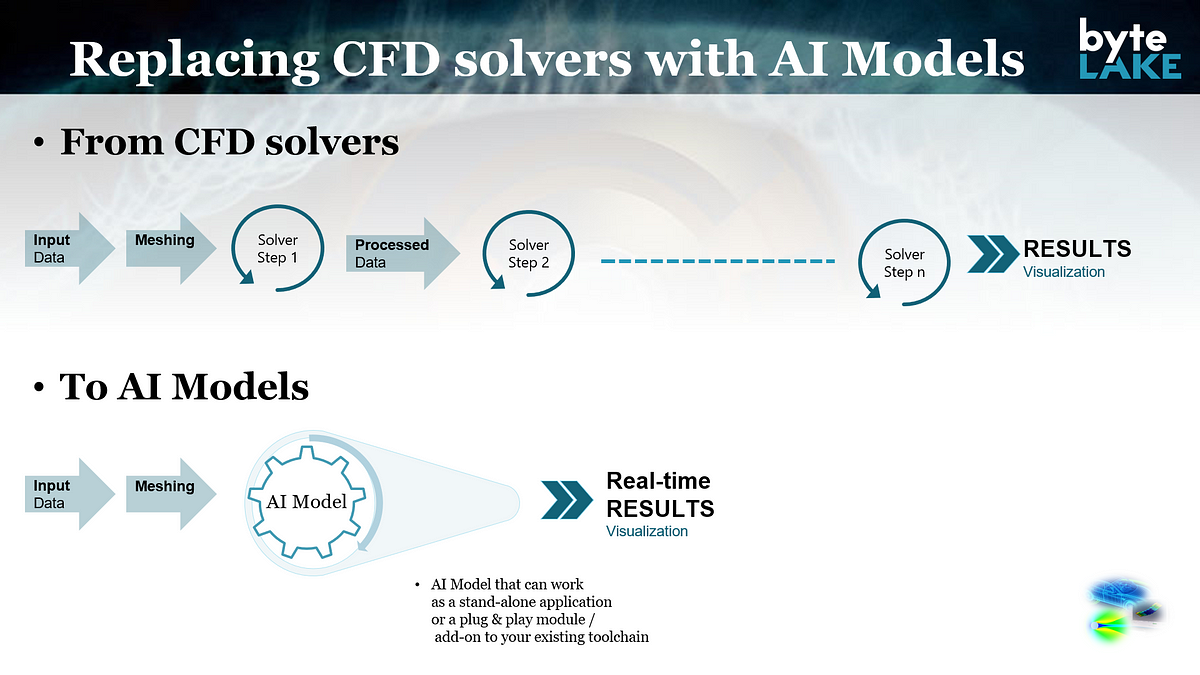Welcome to part 3 of my AI for CFD blog post series. Previously I explained how the team at byteLAKE took their first steps into the world of CFD somewhat 10 years ago. I summarized how we tried different approaches as we progressed and delivered projects focused on both GPU and FPGA adaptation work. While moving to heterogeneous computing seemed like the right and the only choice at that time to speed up the calculations, we always knew something was missing in the equation. Nevertheless, we listened to the voice of our clients and partners and eventually decided to start building a cross-platform solution with the option for extra benefits offered by heterogeneous architectures rather than build a solution that is tied to any particular hardware. Also, having completed several research projects, we saw a great and at the same time uncharted potential for applying AI (Artificial Intelligence) in one more area, this time HPC (High-Performance Computing) industrial simulations.
Based on all of these experiences we always asked the following question within the byteLAKE team: could AI enable tremendous acceleration of calculations across the CFD industry? Well, it seems that AI has a lot to offer for CFD. Follow this blog post series to stay up to date with byteLAKE’s CFD Suite development work.
byteLAKE’s AI for CFD, CFD Suite is a cross-platform solution and is not tied to any particular hardware. It can work on CPU-only as well as heterogeneous architectures though. We designed in a way that our partners can use CFD Suite in their existing environments and so that no adjustments are needed.
#ai #research #cae #fluid-mechanics #artificial-intelligence
